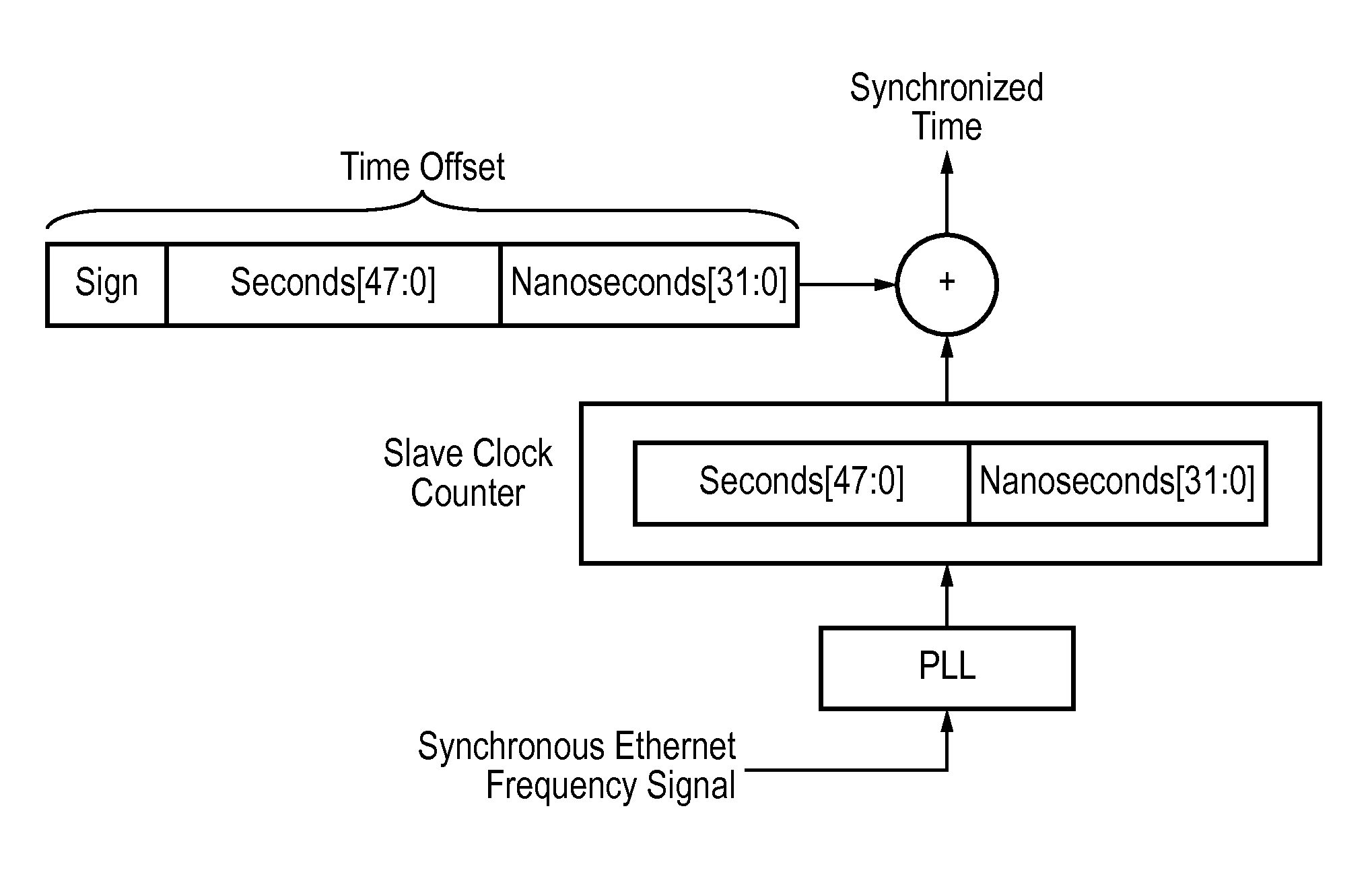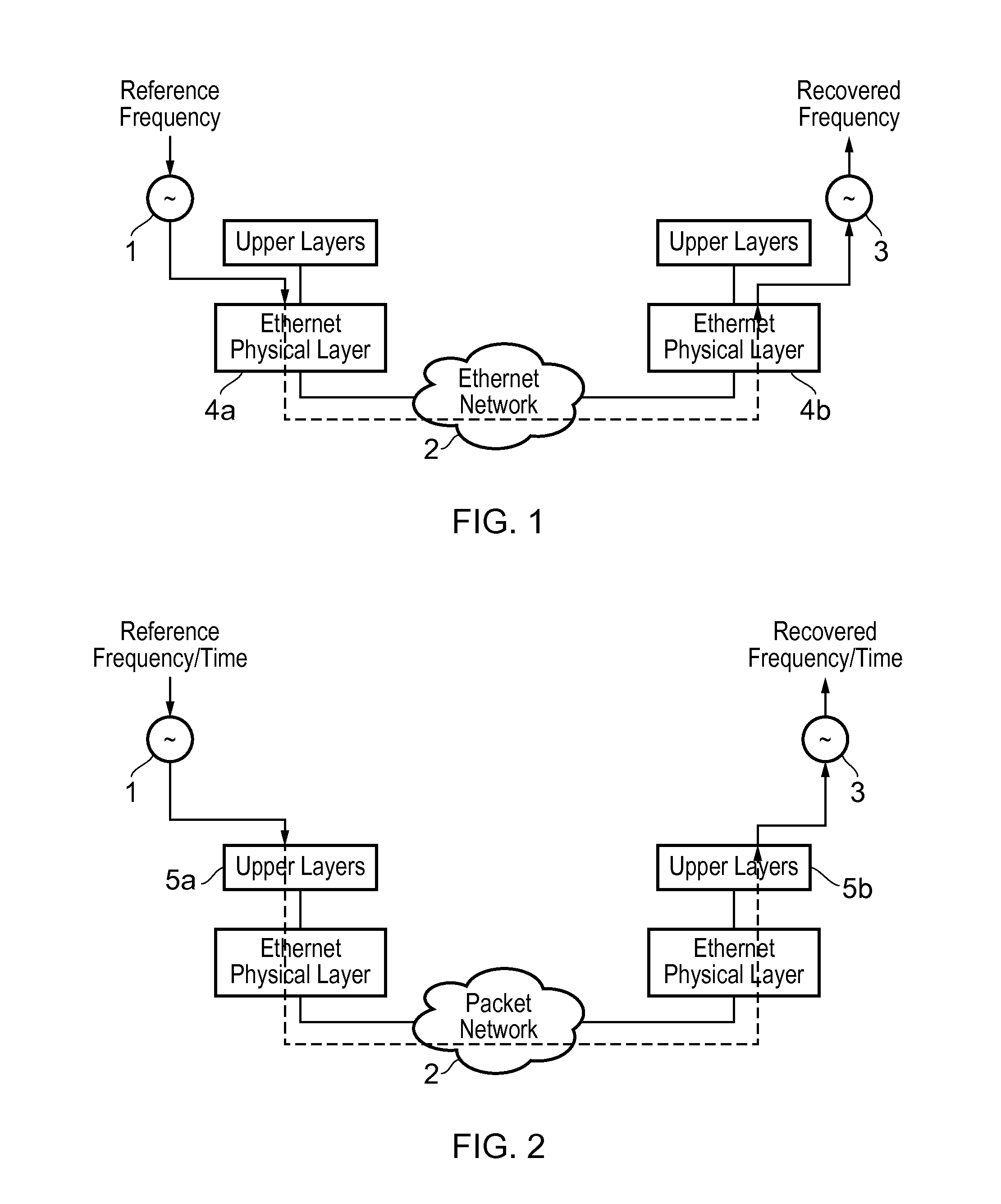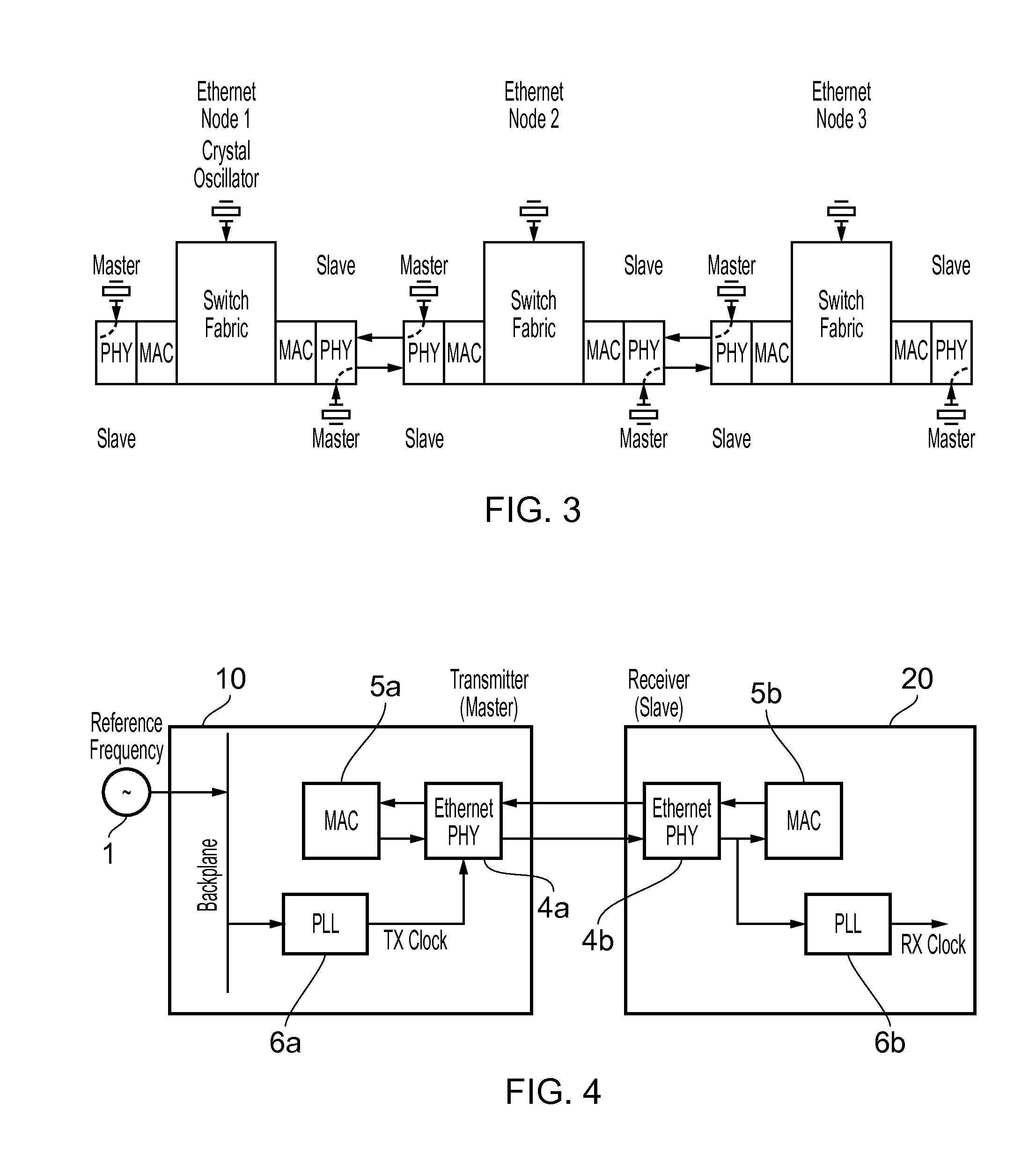Method and devices for synchronization
a synchronization and device technology, applied in the field of synchronization devices, can solve the problems of local interference between channel frequencies, mutual interference with neighboring base stations, and call drop, and achieve the effect of reducing the overall user experien
- Summary
- Abstract
- Description
- Claims
- Application Information
AI Technical Summary
Benefits of technology
Problems solved by technology
Method used
Image
Examples
Embodiment Construction
[0044]Accordingly, at their broadest, methods of the present invention provide for synchronising the time and frequency of a clock in a slave device to the time and frequency of a master clock in a master device by using both Synchronous Ethernet communications and additional timing messages.
[0045]A first aspect of the present invention provides a method of synchronising the frequency and time of a slave clock in a slave device to a master clock in a master device, wherein the master device and the slave device are connected by an Ethernet network, the method including the steps of: synchronising the frequency of the slave clock to that of the master clock using Synchronous Ethernet communications between the master device and the slave device; receiving in the slave device first and second timing messages sent from the master device and respective first and second timestamps being the time of sending of the first and second messages according to the master clock, and recording the ...
PUM
 Login to View More
Login to View More Abstract
Description
Claims
Application Information
 Login to View More
Login to View More - R&D
- Intellectual Property
- Life Sciences
- Materials
- Tech Scout
- Unparalleled Data Quality
- Higher Quality Content
- 60% Fewer Hallucinations
Browse by: Latest US Patents, China's latest patents, Technical Efficacy Thesaurus, Application Domain, Technology Topic, Popular Technical Reports.
© 2025 PatSnap. All rights reserved.Legal|Privacy policy|Modern Slavery Act Transparency Statement|Sitemap|About US| Contact US: help@patsnap.com



